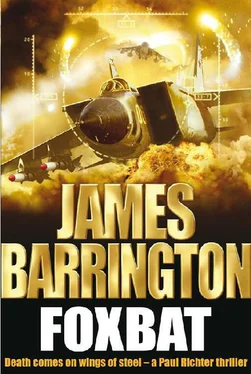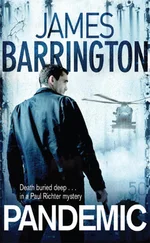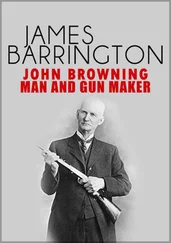The badge meant nothing at all to Richter, who’d never before seen a National Intelligence Service ID. Since nobody, apart from Simpson and presumably now the NIS hierarchy, knew he was due to arrive in Seoul, he guessed the guy was probably genuine. But Richter would never take anything at face value, so before he went anywhere he intended to run a check.
‘The car is over here, sir,’ the man said, leading the way towards a Mercedes saloon.
‘How did you recognize me?’ Richter asked, as he put his two cases in the boot.
‘Your Mr Simpson’ – the name came out more like ‘Thimthon’ – ‘sent us a description and a photograph.’
‘Most considerate of him,’ Richter murmured dryly. ‘Two questions first. Where are we going? And what’s the name of the head of your organization?’
The man smiled as he opened the rear door of the car. ‘To our new headquarters building at Naegok-dong, and that’s where Bae Chang-Su, the Director-General of the NIS, is waiting to meet you.’
‘Good enough,’ Richter said, and climbed into the back seat.
United States Strategic Command (USStratCom) Command Center
The Underground Complex, Offutt Air Force Base, Omaha, Nebraska
The foundation of America’s national strategy of deterrence is called the Triad. Nothing to do with Hong Kong street gangs, the Triad comprises the three strategic elements of the American military machine: long-range bombers, land-based ICBMs and ballistic missile-carrying submarines.
Each component of the Triad provides America with a different strength and capability, and presents an enemy with three entirely different threats to counter. Of the three, the submarines, the SSBNs, are arguably the most lethal, offering a unique combination of mobility, colossal firepower, invisibility and hence survivability, while at the same time providing American leaders with a global strike capacity with the highly successful Trident missile.
There are usually between five and fifteen SSBNs constantly at sea, manoeuvring within designated patrol areas that each extend to around one million square miles, ready at all times to react to coded instructions to launch one or all of their twenty-four Trident missiles.
All US nuclear-powered submarines are assigned to either the Pacific or the Atlantic Fleets, but control over their strategic assets, meaning the missiles, is vested in the United States Strategic Command. The USStratCom Command Center is the locus of this organization and its primary function is to transmit National Command Authority directives to the strategic arsenal of all three legs of the Triad, under the ultimate authority of the President of the United States of America himself.
The USStratCom Command Center is a purpose-built, two-level, fourteen-thousand-square-foot concrete and steel section of the Underground Command Complex, which also houses the Force Status Readiness Center, the Intelligence Operations Center and various other strategically vital offices. Like Cheyenne Mountain, the complex can be sealed in times of tension or war, and is able to operate independently for prolonged periods of time. Critical command and control communications equipment is specially shielded against the effects of the electromagnetic pulse which follows a nuclear explosion, and allows the Commander In Chief of USStratCom to control forces worldwide both before and during a nuclear war.
As soon as the Joint Chiefs of Staff increased the readiness state for US forces globally to DEFCON Four, CINCSTRAT ordered the complex to be sealed, then summoned his senior staff for a high-level restricted-access command briefing.
‘Gentlemen,’ General Mark Winchester began, ‘the CIA has obtained technical intelligence that shows North Korean forces assembling north of the Demilitarized Zone. Pyongyang is claiming that these manoeuvres are part of an exercise called “Silver Spring”, but the fear in Washington is that they’re actually the prelude to an invasion of South Korea.
‘The White House, in consultation with the Joint Chiefs, has taken this threat sufficiently seriously to go to DEFCON Four, and our forces will remain in this state, or in a higher state of readiness, until either the threat is dismissed as a false alarm or an invasion attempt is actually made by the DPRK.’
Winchester paused and glanced around the long oblong table. Nobody spoke, or reacted in any way, which is precisely what he had expected. All of his senior staff had been fully aware of the situation for at least one day, and most of them had moved into the complex even before CINCSTRAT. The briefing he was giving would, essentially, tell them nothing they didn’t already know, but it would summarize the latest intelligence and, more importantly, lay out the options available and the actions then to be taken.
‘The first task is to ensure the integrity of our C 3I assets,’ General Winchester said. He pronounced it ‘cee cubed eye’ and the acronym stood for command, control, communication and intelligence. ‘I want continuous checking routines to be run on all our landline, radio, microwave and satellite systems with immediate effect, starting with the Red Phone system and JANET.’
The ‘Red Phone’ is the slang term applied to the Primary Alerting System, a network of dedicated telephone circuits that allows USStratCom controllers to communicate directly with over two hundred operational centres worldwide, including individual intercontinental ballistic missile silos and missile-launch control centres.
‘JANET’ is the Joint Chiefs of Staff Alerting Network, which comprises direct lines to the National Military Command Center in the Pentagon and to all other principal command headquarters. The system permits CINCSTRAT to communicate immediately with the two National Command Authorities – the President of the United States and the Secretary of Defense – and with the Chairman of the Joint Chiefs of Staff and other military commanders.
The Command Center also has access to a vast range of radio networks, operating in every available frequency band. These networks, in conjunction with relay and communications satellites, allow direct contact with aircraft in flight in any part of the world, and allow the transmission of National Command Authority orders to American military assets worldwide.
‘The North Korean threat, assuming this is not just an exercise, isn’t directed ostensibly against the United States, but I want to ensure that we’re ready in all respects should the situation deteriorate and involve a direct threat to the homeland. The longest-range missile the North Koreans are known to be working on currently is the Taep’o-dong 2, and the latest intelligence assessments suggest it probably can’t reach any part of the continental US except Alaska, which doesn’t really count.’ Winchester got the smiles he expected. ‘But intelligence has been wrong before, so within the next four hours I want to see two additional E-6B Cover All aircraft holding at Tinker Air Force Base in Oklahoma at Alert Thirty and Sixty, and another National Airborne Operations Center E-4B at Alert Thirty here at Offutt.’
Originally, the Strategic Air Command’s airborne command post was an EC-135, code-named Looking Glass. When this platform was retired from service, the upgraded E-6B TACAMO aircraft assumed the mission, and the revised code-name Cover All.
‘Finally, I want the Ground Mobile Headquarters deployed immediately, and to be fully operational no later than twelve noon tomorrow. Send it somewhere central – Colorado or Kansas, say – and ensure that communications with it are kept to an absolute minimum to avoid compromising its location.’
In the circumstances, what Winchester was ordering was overkill, but he’d never seen any point in having assets if they weren’t being used, and the Ground Mobile Headquarters was USStratCom’s last-ditch asset. An entirely self-sufficient mobile unit, it can set up operations anywhere inside the United States and there duplicate all the control functions of the Command Center itself. By virtue of its mobility, its location cannot be known far enough in advance to get programmed into enemy missile-guidance systems, so it is effectively invulnerable to an enemy strike.
Читать дальше












